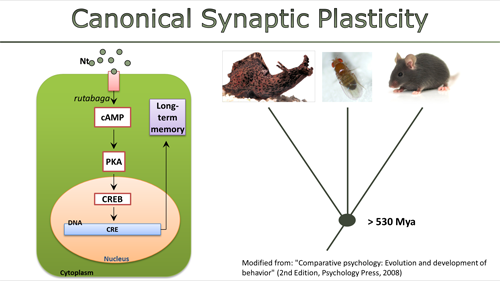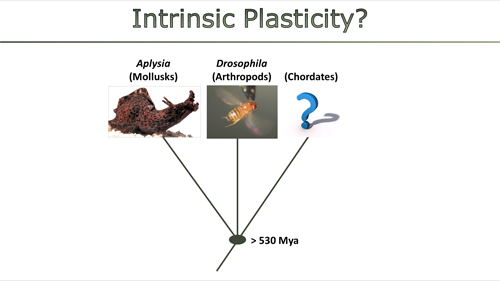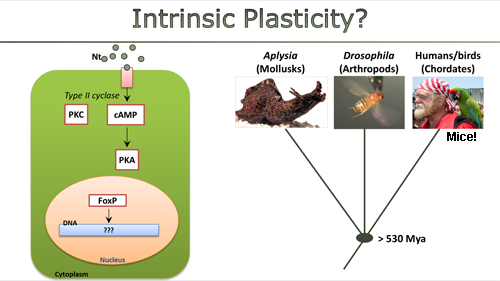Main Menu
Welcome
 And until today, this paper from last week even flew completely under my radar. I had seen the title and decided it's not relevant. A collaborator of mine sent it to me after she found it searching for a current affiliation of a former postdoc of hers - which was how she realized how pertinent this work was to our research and sent it to me (which says something about the way scientists are able to stay on top of the literature. Note to self: write separate post!).
And until today, this paper from last week even flew completely under my radar. I had seen the title and decided it's not relevant. A collaborator of mine sent it to me after she found it searching for a current affiliation of a former postdoc of hers - which was how she realized how pertinent this work was to our research and sent it to me (which says something about the way scientists are able to stay on top of the literature. Note to self: write separate post!).This paper detailing experiments in transgenic mice joins a pair of papers in invertebrate model systems ( Aplysia and Drosophila), suggesting that brains have two distinct molecular learning mechanisms, one to learn about relationships among events in the world around them and one to learn about the effects of their own behavior on the world. This distinction shares several conceptual features with the distinctions that have been made between operant conditioning and classical conditioning or between declarative and procedural memory, and several other related dichotomies, but is yet slightly different.
Here's a drastically simplified diagram of what the current canonical pathway looks like for 'synaptic plasticity', the kind of physiological process that modifies the connections between neurons in order to store memories (screenshot from one of my talks):

Briefly, the to-be-remembered information is translated into neuronal signals which are eventually translocated into the memory-storing neuron, where an adenylyl cyclase (encoded by the rutabaga gene in flies) generates cAMP, which activates Protein Kinase A (PKA), which in turn eventually activates a protein with the acronym CREB. CREB is a transcription-factor switching on genes which modify the neuron, storing the memory. Not shown is how PKA can itself also modify the neuron to allow memories to form almost instantaneously, without the need for protein synthesis (which takes a while). OK, this is really extremely simplified, but the important point here is that there is no Protein Kinase C (PKC) involved. In fact, PKC has been shown to either not be involved at all, or only to maintain the memory, long after it's been formed. The cool thing about this learning mechanism (and why its discovery got the Nobel Prize in 2000) is that you find it in all bilaterian animals, e.g. flies, snails and mice.
In 2008 I wrote here about one of our publications that we had discovered a 'Skinnerian' learning mechanism, which did not require the rutabaga gene, but PKC. Back then we couched the discovery in terms of the 70-something year-old debate about whether operant and classical conditioning share a common learning mechanism or not. The idea was that operant conditioning involves learning about the consequences of one's behavior while classical conditioning involves learning about the ring of a bell being followed by food
 For this experiment, we used the genetic toolkit of Drosophila to express an inhibitor of PKC (PKCi) in all cells of the fly only during the experiment. These flies had trouble learning an operant task in which all external cues had been removed, but as soon as 'classical' cues were added, they learned just fine.
For this experiment, we used the genetic toolkit of Drosophila to express an inhibitor of PKC (PKCi) in all cells of the fly only during the experiment. These flies had trouble learning an operant task in which all external cues had been removed, but as soon as 'classical' cues were added, they learned just fine.This discovery was followed in the same year by a paper from my postdoctoral lab that showed basically the analogous outcomes in the marine snail Aplysia. This got me very excited: flies and snails? What about the chordates?

In their new paper, Rochefort et al. express the same PKCi peptide that we had used in our fly study in the cerebellum of mice. They use these mice to perform orientation and navigation experiments in which the animals either have to rely on self-motion cues (procedural learning) or on the position and identity of external cues (declarative learning) to find a particular location. It turned out that in all three of their experiments, whenever the animals could rely on external cues, they learned to find the location just fine. However, when the cues either were removed or arranged in a way to conflict with each other, the mice showed a severe decrement in performance. In other words, also these colleagues found a PKC-dependent form of learning which is mainly concerned with the behavior of the animal itself and less with learning about events in its environment.
Are these experiments in three model systems enough to make a strong claim there we are in the process of opening up a new field of research, the study of 'self-learning'? I wouldn't think so if we wouldn't have yet another piece of evidence up our sleeves: we are currently in the process of submitting a manuscript that details our results on the fly gene most closely related to the 'language gene' (that wasn't), FOXP2. Briefly, language acquisition can be thought of as an operant process: babies babble and use the auditory feedback of what it sounded like when they babbled to change their babbling - eventually into language. Songbirds learn their songs in a quite similar way. Both humans and songbirds have trouble learning their respective vocalizations if the gene FoxP2 is not intact. So we went and looked for a homologous gene in Drosophila, found it (dFoxP), manipulated it and found that the manipulations had the same effect as the PKCi expression: self-learning was affected and world-learning wasn't.
Thus, we (several different labs independently) now appear to have discovered not one, but two components of this new self-learning mechanism, PKC and FoxP:

In fact, evidence from Aplysia suggests that this mechanism also includes cAMP, but form a different cyclase and activating a different sort of PKA. However, this has not been tested in the other systems, so far.
Thus, I think there now are too many converging results from very disparate experiments to just be chance. I now have the very strong suspicion that we are on the cusp of the birth of a new research field: the neurobiology of self-learning.
Rochefort, C., Arabo, A., Andre, M., Poucet, B., Save, E., & Rondi-Reig, L. (2011). Cerebellum Shapes Hippocampal Spatial Code Science, 334 (6054), 385-389 DOI: 10.1126/science.1207403
Posted on Monday 31 October 2011 - 13:29:27 comment: 0
{TAGS}
{TAGS}
You must be logged in to make comments on this site - please log in, or if you are not registered click here to signup
Render time: 0.1023 sec, 0.0052 of that for queries.





